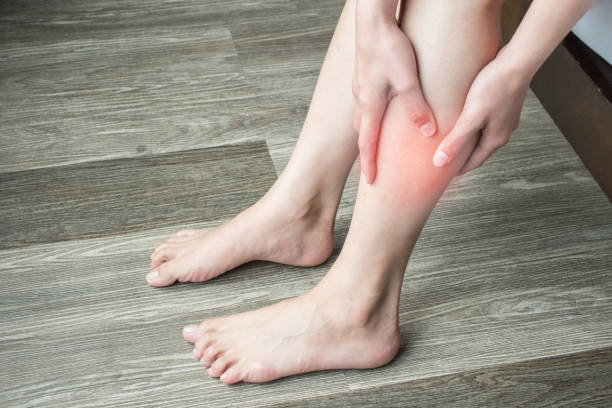
Deep vein thrombosis (DVT) results from a blood clot in your calves, thighs or pelvis. This stationary blood clot, otherwise known as a thrombus, may form due to a sedentary lifestyle or poor circulation. When blood cells in your deep veins don’t get the movement they need, they can pool and create acute or chronic DVT.
These deep vein thrombosis classifications may cause symptoms or other health risks that require treatment, so it’s important to know what to expect from acute or chronic DVT.
Some of the risk factors that can lead to developing DVT are:
Acute DVT refers to a spontaneous or short-term blood clot. If the thrombus starts in your veins within the last 14 days or less, we classify it as acute DVT. Acute DVT is a potentially life-threatening condition if left untreated. It can travel in the vein system to the lungs as a pulmonary embolus. Without blood thinners, more clots can form and can become free floating and travel to the lungs as a lethal pulmonary embolus. Most acute cases are manageable with proper treatment since the thrombus will not harden or stick to your vein’s walls in this time frame. Some patients may experience subacute DVT, which is present in the body for 14-28 days. These cases are more severe than acute DVT, with greater chances of hardening or connecting to the veins.
Patients with acute or subacute DVT can be treated with medication that dissolves the clot. Blood thinners keep new clots from forming. The trick with a deep vein thrombosis diagnosis is catching it early. While the thrombus is still soft and stationary, your treatment will dissolve the blood clot. Worsening conditions may be a sign the clot is beginning to stick to your veins, so call a doctor if you notice any of the following DVT symptoms:
Additionally, an acute DVT can travel to the lungs as a pulmonary embolus causing shortness of breath, chest pain on deep breathing, or severe light headedness and low blood pressure.
Anticoagulation for DVT is so the body does not create new clots on the irregular surface of the DVT. The body has a natural system to dissolve the blood clots while the blood thinners keep the new clots from forming.
Chronic DVT is a long-term medical condition with greater health risks than acute DVT. This DVT classification results from a blood clot that has persisted for 28 days or longer. After this extended period, your blood clot has likely hardened and connected with your interior vein walls. This process can create new medical conditions, including scar tissue, poor circulation, and acts as a source of recurrent DVT.
Chronic DVT and PE are significant risk factors for venous thromboembolism (VTE). VTE is a life-threatening condition in which a blood clot has moved upward toward the lungs. VTE happens when the thrombus hardens and shrinks within the vein, allowing it to travel freely.
To avoid these medical conditions, patients with chronic DVT should seek immediate treatment if they experience the symptoms below:
Treatment for chronic or acute DVT symptoms typically includes anticoagulation, the process of dissolving and preventing blood clots. Certain cases may require additional treatment depending on your needs. At Central Florida Vein and Vascular Center, we assist DVT patients with comprehensive, minimally invasive care.
Unsure whether you have chronic or acute DVT? Our experts at Central Florida Vein and Vascular Center can deliver solutions before your condition progresses or worsens. We provide deep vein thrombosis diagnoses and treatment so you can feel happier and healthier in your body.
Schedule a consultation with our vein experts to learn more about DVT classifications or care options or call 407-545-3385 or 352-658-5547 today!